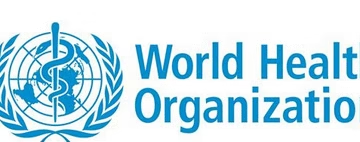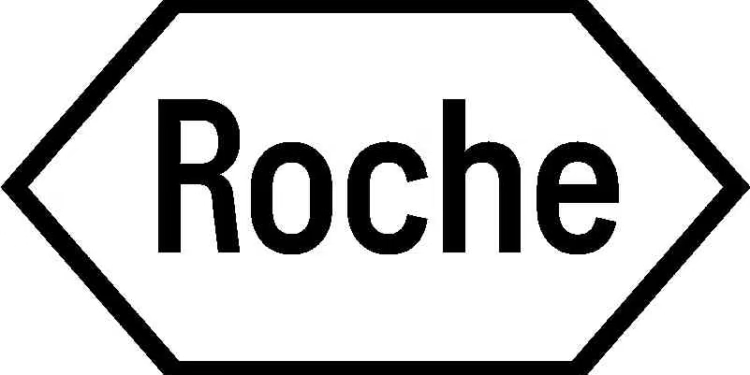- Phase III trial informed by comprehensive KARDIA data set generated through three Phase II studies: KARDIA-1, KARDIA-2 and KARDIA-3
- In the Phase II KARDIA-3 study, presented today as a late breaker at the European Society of Cardiology Congress 2025, zilebesiran demonstrated clinically meaningful reductions in office systolic blood pressure at month three with continuous control through month six
- Zilebesiran, a potential best-in-disease RNAi anti-hypertensive with twice-yearly subcutaneous dosing, demonstrated encouraging safety when combined with two or more antihypertensives
- Phase III cardiovascular outcomes trial expected to be initiated by the end of the year
Basel, 30 August 2025 – Roche (SIX: RO, ROG; OTCQX: RHHBY) and Alnylam (Nasdaq: ALNY) today announced the decision to initiate a Phase III cardiovascular outcomes trial (CVOT) to evaluate the ability of zilebesiran, a RNAi therapeutic, to reduce the risk of major adverse cardiovascular events in patients with uncontrolled hypertension. This decision was informed by the comprehensive KARDIA Phase II programme, including KARDIA 1, KARDIA 2 and the most recent KARDIA-3 study evaluating the efficacy and safety of zilebesiran in patients with uncontrolled hypertension and high cardiovascular (CV) risk, on two to four standard of care antihypertensives. In particular, KARDIA-3 aimed to define the patient population to be investigated in the Phase III CV outcomes trial.
Results of KARDIA-3 showed that a single dose of zilebesiran (300 mg every six months, subcutaneous injection) resulted in clinically meaningful placebo-adjusted reductions of office systolic blood pressure (SBP) in all comers at the month three primary endpoint (-5.0 mmHg; p=0.0431) with sustained benefits out to month six (-3.9 mmHg; 95% CI: [-8.5, 0.7]). There were no additional benefits of the 600 mg dose at month three (-3.3 mmHg; p=0.1830) or month six (-3.6 mmHg; 95% CI: [-8.2, 1.0]). The overall KARDIA-3 study did not meet the pre-specified definition for statistical significance, because of a multiplicity statistical testing approach. However, the study met the aim of identifying the patient population that could potentially benefit the most from zilebesiran and also showed encouraging safety and clinically meaningful placebo adjusted reductions in blood pressure.
As observed in the KARDIA-2 Phase II study, the KARDIA-3 results support a robust benefit of combining zilebesiran with a diuretic, a commonly used antihypertensive. In an analysis of patients that were on diuretics and had a baseline BP >140 mm Hg, the placebo-adjusted reduction was -9.2mmHg; (-17.3, -1.2) at month three and -8.3mmHg (-16.4, -0.2) at month six. A precedent for enhanced blood pressure reduction conferred by this type of combination is established in both literature and clinical practice.
“Zilebesiran has the potential to become a best-in-disease treatment for many patients with uncontrolled hypertension. Its blood pressure-lowering effects and twice-yearly dosing could reduce the risk of serious health complications and death,” said Levi Garraway, MD, PhD, Roche’s chief medical officer and head of Global Product Development. “Detailed analysis of our comprehensive Phase II clinical trials have informed our decision to move zilbesiran into Phase III. Despite current treatment options, up to 80% of people with hypertension do not achieve adequate blood pressure control putting them at higher risk of cardiovascular events. Therefore, additional treatment options are needed.”
Zilebesiran also demonstrated encouraging safety in patients with comorbidities on multiple background therapies – more than 90% of whom were receiving treatment with an ACE inhibitor or an Angiotensin Receptor Blocker (ARB). These findings reinforce confidence in zilebesiran’s ability to be combined with standard of care antihypertensives.
As a result, the ZENITH (ZilebEsiraN CardIovascular OuTcome Study in Hypertension) Phase III trial has been submitted to global regulators and is expected to be initiated by the end of 2025. ZENITH will be a CVOT enrolling approximately 11,000 patients and evaluating zilebesiran (300 mg) every six months compared to placebo in patients with uncontrolled hypertension with either established CV disease or at high risk for CV disease on two or more antihypertensives, one being a diuretic.
Hypertension is the primary cause of and number one modifiable risk factor for cardiovascular disease. An estimated one in three adults, over 1,2 billion people worldwide, have hypertension and despite the wide availability of antihypertensives, up to 80% of them do not achieve adequate blood pressure control. Poor adherence to daily oral therapies is an important contributor to poor blood pressure control and CV outcomes. An effective long-acting therapy that provides continuous control of blood pressure may help to reduce the burden of uncontrolled hypertension.
With its growing cardiometabolic portfolio and strong diagnostic expertise, Roche is advancing transformative standards of care to improve the lives of people living with cardiometabolic diseases as well as reducing the significant burden on healthcare systems and society.
About the KARDIA-3 study
KARDIA-3 (NCT06272487), the third phase II study in the KARDIA programme, included two Cohorts (A and B). Cohort A assessed zilebesiran in patients with eGFR ≥ 45 mL/min/1.73m2, while Cohort B included patients with advanced kidney dysfunction (i.e., eGFR between 30 and <45 mL/min/1.73m2). Cohort A enrolled 270 patients who were randomised to treatment with zilebesiran (300 mg or 600 mg) or placebo. Randomisation was stratified by background diuretic use, baseline blood pressure, and race. The primary endpoint was change in office SBP at month three. Key secondary endpoints were changes in office SBP at month six and change in 24-hour mean ambulatory SBP at months three and six.
At baseline, 144 (53.3%), 96 (35.6%) and 30 (11.1%) patients were on two, three, or over three antihypertensives, respectively, with ~91% of patients taking ACE inhibitors/ARBs, ~66% of patients taking a diuretic, and ~58% of patients taking calcium channel blockers. The mean baseline office and 24-hour mean ambulatory SBP were 143.6 mmHg and 142.4 mmHg, respectively (N= 270).
KARDIA-3 Cohort A Primary Results (Placebo-Adjusted Changes from Baseline):
| Cohort A Study population | Endpoint | Month three change (censored)* † | Month six change (all collected) ** † |
| Overall study population (N=270) | Office SBP (300 mg) | -5.0 (-9.9, -0.2)
p=0.0431 |
-3.9 (-8.5, 0.7)
|
| 24-Hour Mean Ambulatory SBP (300 mg) | -3.6 (-7.7, 0.4)
|
-5.5 (-9.4, -1.5)
|
|
| Subgroup (N=110)
(Diuretics and with baseline SBP≥140mmHg) *** |
Office SBP (300 mg) | -9.2 (-17.3, -1.2) | -8.3 (-16.4, -0.2) |
| 24-Hour Mean Ambulatory SBP (300 mg) | -6.8 (-13.9, -0.2) | -6.6 (-13.3, -0.0) | |
| *** Post hoc Analysis | *Censored analysis excludes patients who intensified antihypertensive use within two weeks of visits at month three
**All collected analysis includes all available patient data, regardless of medication changes, through visits at month six
The statistical testing procedure, The Hochberg Method, was used for multiplicity control, requiring both doses to have a p<0.05 or one dose to have a p<0.025 to be considered statistically significant. As the primary endpoint was not significant, statistical significance could not be claimed for secondary endpoints. †The placebo adjusted SBP changes are shown as LS mean (95% CI) |
||
In summary, in the Cohort A overall study population, zilebesiran 300 mg achieved clinically meaningful reductions in office SBP at month three, with sustained benefits out to month six, compared to placebo. No incremental SBP reductions were observed with zilebesiran 600 mg at months three or six. Post-hoc analyses suggest that a greater blood pressure-lowering effect with zilebesiran was observed in patients on diuretic therapy and uncontrolled hypertension at baseline (with office SBP ≥140). Reductions in blood pressure were sustained over six months, and the entire 24-hour period. Incremental reductions were also observed at nighttime, a period during which blood pressure elevation is a strong predictor of cardiovascular risk.
Consistent with prior studies, zilebesiran demonstrated an encouraging safety profile when added to two or more background antihypertensives (over 90% of whom were receiving treatment with an ACE inhibitor or an ARB). Most adverse events were mild or moderate, non-serious, and transient with few requiring intervention; rates of hyperkalaemia, kidney dysfunction and hypotension were low. Across study arms, serious adverse events were observed in 3.8% and 4.5% in zilebesiran and placebo-treated patients, respectively. No deaths were reported during the six-month double-blind period.
Results from KARDIA-3 Cohort B are expected to be presented at an upcoming medical meeting.








































